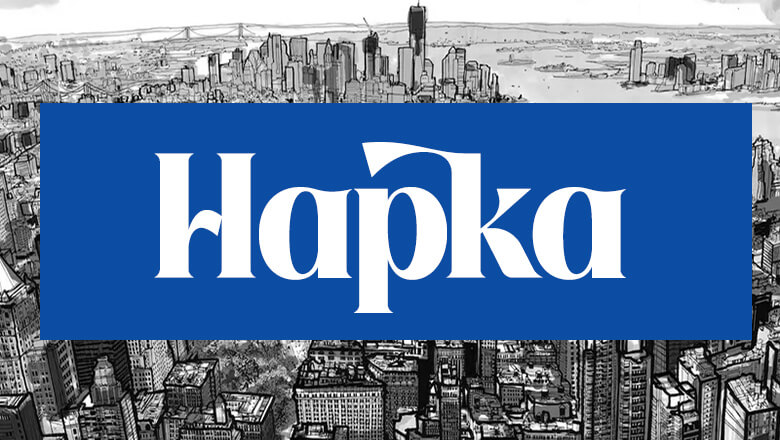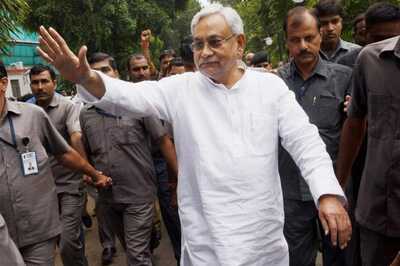
views
What is a Mudra?
Mudras are Buddhist hand signs that reflect the Buddha’s state of mind. The word “mudra” means “seal” or “sign” in Sanskrit. The 5 fingers of the hand represent the 5 levels of consciousness required to reach a state of Buddhahood. By gesturing the hands and fingers in a particular position, you can better get in touch with the meanings behind the mudra. Mudra hand signs appear in Buddhist art and are ways of teaching others different narratives about the life of the Buddha. Mudras also exist in Hinduism and Jainism.
12 Buddhist Hand Signs & Their Meaning
Bhumisparsa Mudra (The Earth Witness Mudra) The bhumisparsa mudra stands for the victory of spirit over matter which means being free from the trappings of the world. By acting out this Buddhist hand sign, you’re expressing the moment that Prince Siddhartha transformed into Buddhahood by reaching enlightenment beneath the bodhi tree. It’s also called the earth-touching mudra and is associated with the Dhyani-Buddha called Akshobhya. The interplay between both hands unifies “upaya,” or “skillful means,” with “prajna,” or “wisdom.” The bhumisparsa mudra’s meanings also include the defeat of temptation and evil as illustrated by the evil king Mara. In Buddhist folklore, King Mara tried to distract Siddhartha away from his practice. In response, Siddhartha reached his right hand out to touch the ground to declare the earth as his witness. How to perform: In a seated position, rest your right hand over your knee while your right arm is straight so all 5 fingers point downwards to the ground. Your left hand can rest on your lap with the palm facing upwards.
Dhyana Mudra (The Mudra of Meditation) The dhyana mudra signals the perfect balance of thought, rest of the senses, and tranquility. It stands for the attainment of spiritual perfection through meditation and concentration on the good law. The dhyana mudra gesture recreates the moment that the Buddha (as Siddhartha) sat under the bodhi tree before enlightenment. By performing this mudra, you can let go of any attachments you have on your path to enlightenment. How to perform: Hold both hands at stomach or thigh level. Place the right hand above the left, with your palms facing outward and fingers extended. Your thumbs can touch, which acts as a symbol of the 3 Jewels of Buddhism: Buddha, the Good Law, and Sangha, or the Buddhist community.
Anjali Mudra (The Namaskara) The anjali mudra represents respect and devotion and is used by bodhisattvas and kings when facing the Buddha. Similar to the namaste greeting, it’s linked to the bodhisattva Avalokiteshvara, a 4-, 8-, or 1,000-armed form, Avalokiteshvara appears in Buddhist statues with his palms slightly opened to form a cup shape. How to perform: In a standing position, place both palms together in a prayer position in front of the heart; the thumbs sometimes appear to point backward.
Manidhara Mudra (Mudra of Holding the Jewel) The manidhara mudra illustrates the gesture of holding a jewel to symbolize the protection and preservation of knowledge and wealth. It’s associated with the bodhisattva called Avalokiteshvara, the embodiment of Buddha’s compassion. The manidhara mudra helps connect you to the qualities of inner abundance and spiritual richness. How to perform: In a standing position, hold both palms in a prayer position in front of the heart. Your palms should remain apart while arching your hands and thumbs to leave a space for wish fulfillment.
Mandala Mudra (The Mandala Offering Mudra) The mandala mudra creates a shape that mimics Mount Meru, considered the center of the universe, along with 4 surrounding continents. You're calling on everything beautiful in the universe and offering it to the Buddha and to the bodhisattvas. By doing this, you're relinquishing your earthly attachments to practice generosity along your spiritual path. How to perform: Hold both your hands in front of you. Cross your pinky fingers over one another and bend both ring fingers downward until they touch. Then, use both your index fingers to hold both middle fingers down and use both thumbs to hold the tips of your pinkies down. Make sure your ring fingers are the only ones not interlaced; they should rest against each other.
Vitarka Mudra (Teaching Mudra) The vitarka mudra signifies the continuous flow of energy and wisdom. It’s associated with the cycle of learning and teaching that is a constant in Buddhism. This mudra often appears in art which depicts the Buddha as a teacher or guide. Among mudras for healing, the vitarka mudra represents the interplay between intellectual and spiritual aspects of Buddhist practices and encourages open dialogue in spreading Dharma, or the teachings of Buddha. How to perform: Hold your right hand at chest level with your pal turned outwards. Your fingers should point upwards with your thumb touching your index finger. Your left hand rests on your lap, with the pal turned upwards.
Varada Mudra (Generosity Mudra) The varada mudra is a symbol of charity, compassion, and boon (or wish) granting. By performing the hand gesture, you’re fulfilling a wish of devotion to human salvation. It’s associated with the 3rd Dhyani-Buddha called Ratnasambhava and appears in many statues of Buddha throughout Southeast Asia. In this gesture, the 5 extended fingers represent the following 5 perfections: generosity, morality, patience, effort, and meditative concentration. How to perform: In a seated or standing position, let your left arm rest naturally at the side of the body. Open the palm of your left hand and face forward, with all 5 fingers extended.
Abhaya Mudra (Mudra of Fearlessness) The abhaya mudra signals peace and friendship, along with pacification, reassurance, or protection. It’s associated with the 5th Dhyani-Buddha, called Amoghasiddhi. This hand gesture shows the Buddha’s compassionate protection for his devotees. How to perform: With a bent elbow, hold your right hand or both hands up so the palm(s) faces forward. Your fingers should be outstretched while your palm(s) is slightly cupped. If performing with the right hand only, your left hand can hang loosely by your side.
Dharmachakra Mudra (Teaching of the Wheel of Dharma) The dharmachakra mudra symbolizes the Buddhist wheel of law and is the most common hand sign. It’s connected to the 1st Dhyani-Buddha, called Vairochana, and is one of five aspects of Buddha. This mudra illustrates the continuous cycle of teachings to guide practitioners on the path to enlightenment using the wheel of dharma as a symbol. How to perform: Hold both hands at chest level while touching the thumb of each hand to the index finger on the same hand to form a wheel shape. Then, hold the left hand so the left palm faces inward toward the body and hold the right hand so the right palm faces outward. You can touch the joined thumb and index finger of the left hand to the middle finger of the right hand. The middle, ring, and pinky fingers of each hand should fan out.
Karana Mudra (Gesture for Warding Off Evil) The karana mudra is a Buddhist symbol of protection that wards off fear, negative energy, and obstacles to spiritual progress. Performing this hand gesture can help you foster positivity, joy, and peace while offering both strength and empowerment. The concept of “karana” refers to “doing” or “action,” which, when enacted in a hand gesture, is a reminder of the Buddhist teachings about overcoming challenges toward enlightenment. How to perform: Extend your right hand vertically or horizontally with your palm facing forward or to the side. Join your middle finger to your thumb to form a circle. Curl your ring finger downward while extending your index and pinky fingers upward.
Vajra Mudra (Thunderbolt Gesture or Gesture of Knowledge) The vajra mudra signals the importance of knowledge and supreme wisdom. By performing this gesture, you’re acting out the image of a fiery thunderbolt the 5 elements of Buddhism: fire, water, air, earth, and metal. In the gesture, the left hand’s index finger represents knowledge, while the right hand clenched in a fist stands for protection of that knowledge. How to perform: While seated, extend the index finger of your left hand while keeping your left hand in front of your heart. Place your right hand into a fist to hold the index finger of your left hand.
Uttarabodhi Mudra (Mudra of Supreme Enlightenment) The uttarabodhi mudra symbolizes supreme enlightenment, by connecting yourself with divine universal energy. The word is composed of the Sanskrit “uttara,” meaning “upward,” and “bodhi,” meaning “enlightenment.” It stands for the light of the soul made possible through the Buddhist spiritual path of enlightenment and invoked energy to the person performing the gesture more than any other hand sign. How to perform: While seated, hold both hands in front of your heart. Allow your index fingers to touch and face upwards, while the remaining fingers of both hands are intertwined.
Buddhist Mudra FAQs
What do the Buddhist hand signals mean? Buddhist hand signals, or mudras, are symbolic gestures that are a form of non-verbal communication with deeper hand sign meanings. They invoke specific actions made by the Buddha or by bodhisattvas, someone on the path toward spiritual awakening. The Sanskrit word “mudra” can mean “seal” or “mark of identity,” which gives them an important place in Buddhist art and when practicing Buddhist meditation.
What is the Zen hand gesture? The zen hand gesture is also called the “cosmic mudra” in Buddhist practice. To perform this mudra, rest your right hand on your lap with your palm facing up. Gently place your left hand on top of your right one, with the left palm also facing up. Your thumbs lightly touch each other to form an oval shape just below your navel. This Buddhist hand sign allows you to hold the universe “in your hands.”
What is the Buddha's hand position? In traditional sculpture, the Buddha’s hands are positioned in one of the 6 central mudras. These include mudras with the following names: “Touching the Earth” (right hand rests on the right thigh, with fingers pointing downwards); “Meditation” (hands resting in his lap with palms upwards); “Charity” (right arm and fingers extended down); “Reasoning” (thumb and index fingers together); “Absence of Fear” (one or both arms with the elbows bent at the wrists, palms outward, and fingers upward); and “Setting the Wheel in Motion” (hands in front of the chest with left hand’s fingers resting in the right hand’s palm).




















Comments
0 comment